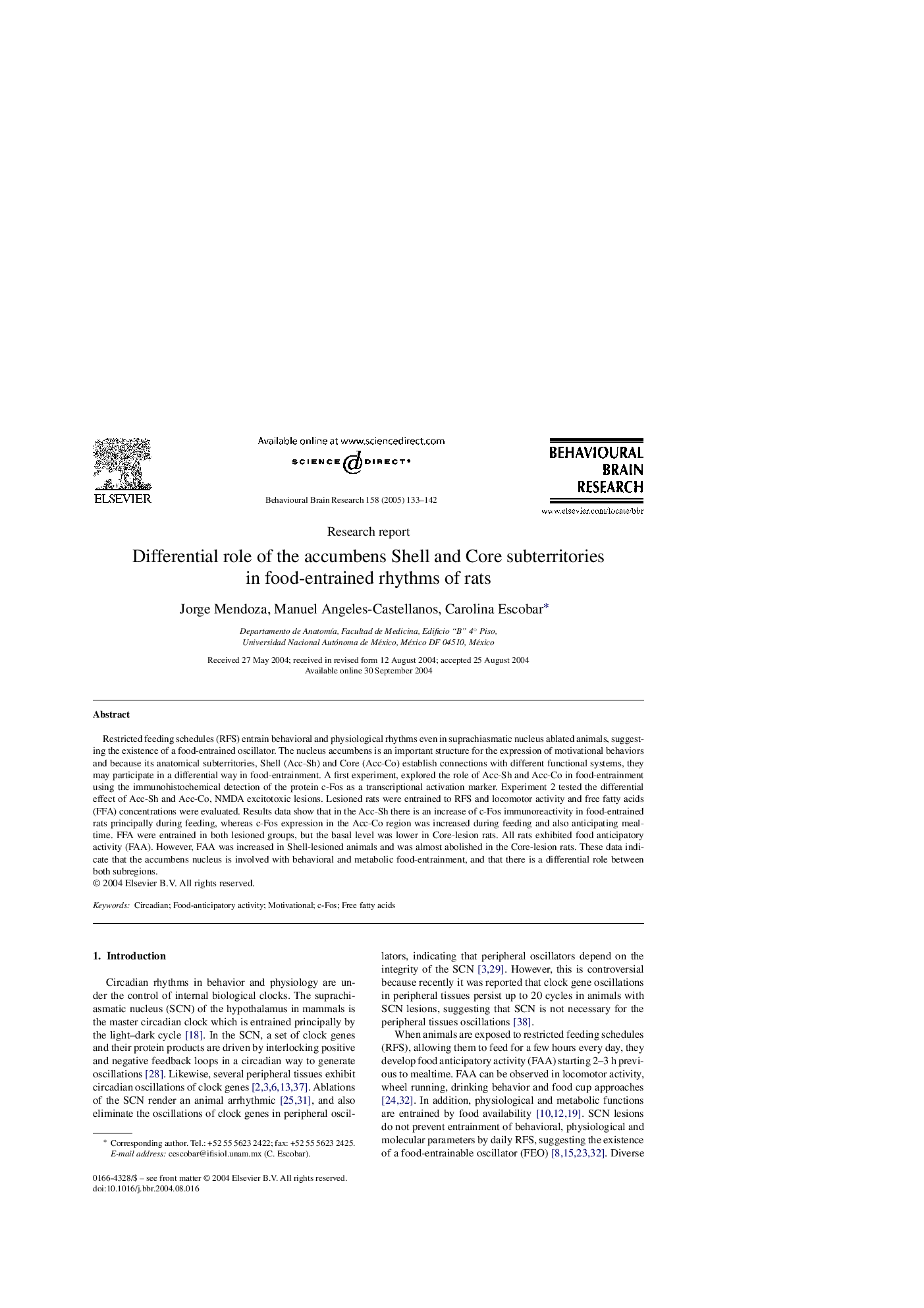| Article ID | Journal | Published Year | Pages | File Type |
|---|---|---|---|---|
| 9406689 | Behavioural Brain Research | 2005 | 10 Pages |
Abstract
Restricted feeding schedules (RFS) entrain behavioral and physiological rhythms even in suprachiasmatic nucleus ablated animals, suggesting the existence of a food-entrained oscillator. The nucleus accumbens is an important structure for the expression of motivational behaviors and because its anatomical subterritories, Shell (Acc-Sh) and Core (Acc-Co) establish connections with different functional systems, they may participate in a differential way in food-entrainment. A first experiment, explored the role of Acc-Sh and Acc-Co in food-entrainment using the immunohistochemical detection of the protein c-Fos as a transcriptional activation marker. Experiment 2 tested the differential effect of Acc-Sh and Acc-Co, NMDA excitotoxic lesions. Lesioned rats were entrained to RFS and locomotor activity and free fatty acids (FFA) concentrations were evaluated. Results data show that in the Acc-Sh there is an increase of c-Fos immunoreactivity in food-entrained rats principally during feeding, whereas c-Fos expression in the Acc-Co region was increased during feeding and also anticipating mealtime. FFA were entrained in both lesioned groups, but the basal level was lower in Core-lesion rats. All rats exhibited food anticipatory activity (FAA). However, FAA was increased in Shell-lesioned animals and was almost abolished in the Core-lesion rats. These data indicate that the accumbens nucleus is involved with behavioral and metabolic food-entrainment, and that there is a differential role between both subregions.
Related Topics
Life Sciences
Neuroscience
Behavioral Neuroscience
Authors
Jorge Mendoza, Manuel Angeles-Castellanos, Carolina Escobar,
